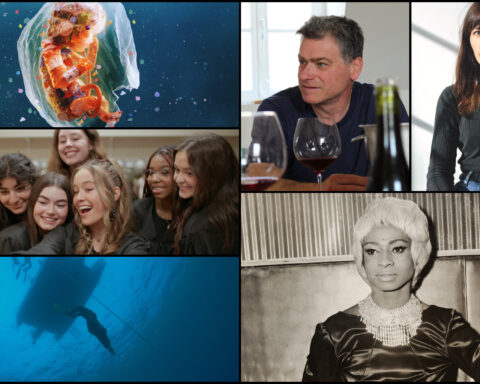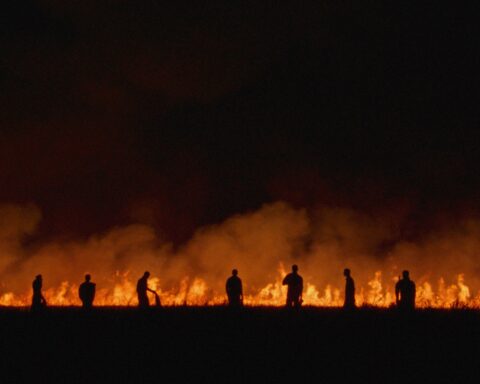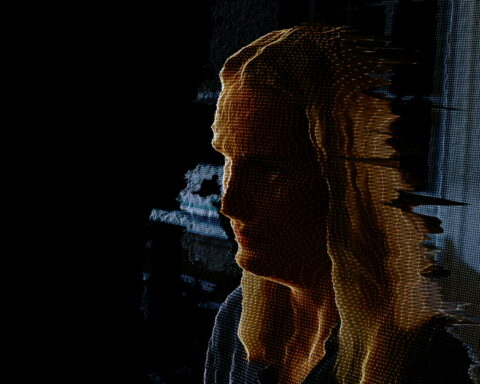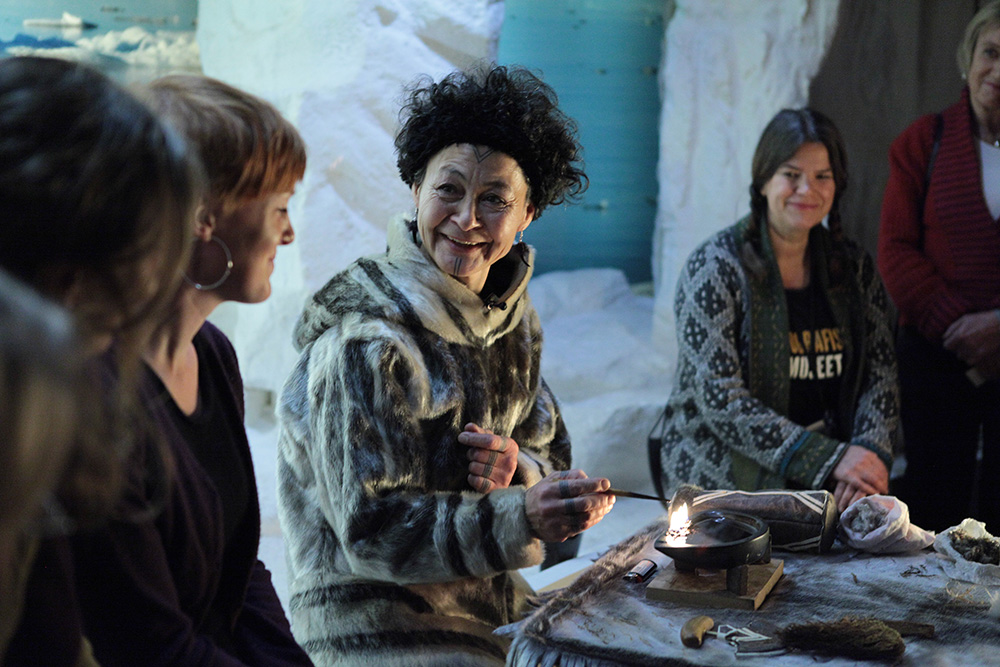Outsiders: American Photography and Film 1950s–1980s, an exhibition organised by the Art Gallery of Ontario (AGO), is a veritable tour de force, both in scope and as a curatorial statement that will give it an historical relevance for Toronto in years to come. Co-curated by Sophie Hackett, associate curator of photography, and Jim Shedden, manager of publishing at the AGO, the show features the work of some of America’s most excitingly edgy photographers and experimental filmmakers. Not only were the artists and filmmakers “outsiders” from the mainstream media and galleries, they also lived on the margins of society because of their race, gender, sexual orientation, or simply because they shunned convention and chose alternative lifestyles.
The exhibition contains over 300 photographs, including large bodies of works by photographers Gary Winogrand, Danny Lyon, Gordon Parks, Diane Arbus, Nan Goldin, as well as the welcome surprise of a collection of vernacular snapshots made by people who frequented Casa Susanna, a resort in upstate New York for cross-dressers. Five films — the Beat classic Pull My Daisy by Robert Frank and Alfred Leslie; Shirley Clarke’s verité feature on a gay hustler Portrait of Jason; Diary of a Harlem Family narrated and featuring photos by Gordon Parks; Marie Menken’s experimental pixilation Go, Go, Go, and Kenneth Anger’s acclaimed bikers-meet-Satan-and-rock’n’roll underground hit Scorpio Rising — are also part of the exhibition. Along with Nan Goldin’s slide show The Ballad of Sexual Dependency, they provide narrative and musical punch and are interspersed among the photographic displays. Although there were other photographers who were outsiders, the inclusion of these artists was in part due to a series of recent acquisitions by the AGO and promised donations in which a common filament was identified: the strangeness of the subject matter, of images outside the usual camera repertoire of the period, such as drag queens, cross dressers, bike riders, hippies, student protestors and impoverished African Americans.
In the 1960s, photography in the United States was undergoing a major realignment from the post-World War II representation that had reached its apex with the idealistic vision of the Family of Man exhibition (Museum of Modern Art, 1955). A much darker and alienating side of American society was emerging through the era’s race riots and anti-war protests while simultaneously gay rights, civil rights and women’s liberation movements were on the rise. The publication of Robert Frank’s seminal work The Americans in 1959 heralded an era of questioning and self-doubt in American photography in which subject matter, composition and style were turned upside down, aesthetically speaking. After Frank, a new generation of photographers emerged, ready to respond aesthetically to the turbulent American society of the ’60s and ’70s.
Frank, being a recent immigrant from Switzerland, was an outsider, and as such he was able to see what others could not. He stated that he “was always looking outside, trying to say something that is true.” His work, typified by grainy black-and-white images that captured moments of loneliness, desperation and questioning, was highly controversial. American publishers at first rejected the alienation and bleakness of his America, and his book was only published in the United States after it appeared in France and Italy. Like many photographers, Frank was also an experimental filmmaker, and the curators have responded to his work by including Pull My Daisy, in which he collaborated with Beat writers and poets Jack Kerouac, Allen Ginsberg and Gregory Corso as well as the modernist painters Alfred Leslie and Larry Rivers.
The photographic component of the exhibition opens with an unusually large number of images by Gary Winogrand (1928-1984). About two dozen key photographs are matted and framed, but one wall is taken up completely by 87 unframed prints displayed in three long rows on top of each other, evoking a contact sheet of 35mm film, especially since each image is full frame. This was an astute curatorial decision, for Winogrand was one of the most prolific photographers of the analog age, and photographed so extensively that when he died, he left some 6,600 rolls of 35mm film, much of it undeveloped. How else to show the expanse of his work?
Winogrand photographed New York’s city parks, political events like gay rights and the Kent State demonstrations, socialite gatherings and numerous “unimportant” moments between common people on the street through the 1960s and 1970s. He broke every rule: photographing unobtrusively with a hand-held wide-angle lens, his compositions were spontaneous, often without a central focus, highly graphic, and quixotic. It’s as if he were trying to capture life in a stream of consciousness. His work seems at first uncontrolled and confusing, yet he captures—possibly more brilliantly than any of his generation—the unexpected, chaotic coming-together of shapes and people, juxtaposed into a momentary visual dance on the street that reveals humour, drama, and a sense of visual “anarchy,” to use curator Sophie Hackett’s term. The power of the camera is not merely to reveal the fleeting moments, but conversely, to create them, for such moments can only exist through the intercession of a camera operated by an obsessive observer. Winogrand himself summed it up by declaring, “I photograph to find out what something will look like when photographed…[It] is about finding out what can happen in the frame. When you put four edges around some facts, you change those facts.” His work presents more questions than answers, and challenges the viewer to reconsider those surface “facts.”
In stark contrast to Winogrand, Gordon Parks (1912-2006) was an outsider because of his race and background. An African American born and raised in rural poverty, he said he picked up a camera “because it was my choice of weapons against what I hated most about the universe: racism, intolerance, poverty.” In an age when photographers were predominantly white (and male), Parks became the first important African American photojournalist, and was hired by Roy Stryker for the historic Farm Security Administration project, which included photographers like Walker Evans and Dorothea Lange, and involved shooting rural poverty. He proved his political mettle on one of his first days on the job by producing perhaps the most radical photograph of the period, American Gothic. Parks documented a black woman cleaner in the FSA building holding a mop in one hand and a broom in the other, standing in front of a large American flag. It was a politically charged image because it evoked the iconic painting of the same name, which celebrated a stoic white farm couple, made by Grant Wood over a decade earlier. In 1948, he became the first African American photographer to work at Life magazine. Twenty years later, the magazine published “A Harlem Family,” one of Parks’ most important assignments as a cover story and 16-page black-and-white photo essay. Parks wrote the article, for he was a distinguished writer and poet as well as a musician and filmmaker.
Parks documented the Fontenelle family in their apartment on New York’s Eighth Avenue, and the resulting pictures are powerful documents in the classic tradition of social documentary photography. Having earned the trust of the Fontenelle family, his pictures are an indictment of black urban poverty. Parks’ ability to enter the intimacy of the family’s world brought the readers of the magazine—mostly white—face-to-face with a world that was unknown and feared during a period of racial tensions and riots in large cities. His humanistic photographs of blacks as dignified, respectful, and hard-working people, such as in the photograph Rosie Fontenelle Cleans the Bathtub, were meant to dispel stereotypical notions held by whites. Rosie, one of the daughters in the family, is very hard at work in the context of run-down conditions that are the result of the landlord’s neglect. The chiaroscuro tones produced by window light throughout the series heighten the sense of affect. A bonus of the exhibition is a display of complete copies of the original issue of Life in which the work appeared, much to the delight of crowds of visitors at the AGO on a recent afternoon.
Like him, Parks’ subjects were also outsiders. But an interesting question is whether Parks had unwittingly become an insider of the “system,” for Life was a primary shaper of public opinion in America. It must be asked: to what extent did his work confirm some of the stereotypes—albeit unwittingly—held by whites about blacks? Parks is still somewhat outside the canon of art photography. Despite the excellence of his lifetime work, he has been exhibited infrequently in Toronto, and has not been accorded the recognition that he merits. Outsiders goes a long way towards correcting this oversight and helps to re-establish the significance of Gordon Parks in the history of the medium.
Outsiders by choice were people like bikers, self-proclaimed “outlaws” who formed their own communities outside of the bounds of conventional society. Becoming a member of the Chicago Outlaw Motorcycle Club in 1963, Danny Lyon (b. 1942) documented his adopted community for four years. He eschewed magazine work, and turned to the photo book as his preferred form. The Bikeriders, published in 1968, and from which the works in the exhibition are drawn, is considered a milestone of “new” photojournalism, not only for the depth of its coverage, but also for the flowing narrative of visual storytelling, as if it were a “film on paper.” Lyon’s approach as a photographer is one of personal expression, and he used his camera as an insider, photographing scenes that would have been impossible to take by anyone outside that community. He was one of the first to spend extremely long periods of time—often years—with his subjects, something that was impossible for most magazine photographers of the time, but which has since become a common strategy of documentary photographers devoted to personal projects. Like Parks, Lyons humanised the portrayal of his subjects, but unlike him, he was not trying to change social conditions but rather the misperceptions of the general public toward his beloved bikerider family.
Diane Arbus (1923-1971) is the best-known photographer in th exhibition, since many of her photographs of eccentric people are iconic and appear frequently in books and exhibitions around the world. Yet her lifetime output was not very large, since she died at 48, by suicide. She referred to her subjects as “singular people,” as they were truly peculiar looking, well beyond the accepted “norms” of society, such as drag queens, circus performers, nudists, and others who she referred to as “freaks.” But it was their humanity that she sought to reveal, and in the process perhaps she was attempting to reveal her own, too. Photographing with a flash on a medium-format camera in both daytime and night, she worked collaboratively with her subjects and composed them tightly within the frame, always frontally, from a short distance. The result was a brutal directness, which was unsettling at the time, yet the bizarre look of her subjects made them appealing to large audiences. The connection with the photographer through a direct gaze means that the viewer of the photograph subsequently has a similar experience of intimacy, and the compassion and empathy that Arbus strove to express comes across, unmediated by the aesthetic conventions of formal portraiture.
Arbus once said, “I hate the idea of composition. I don’t know what good composition is…There’s a kind of rightness and wrongness and sometimes I like rightness and sometimes I like wrongness. Composition is like that.” In an age when little can shock the average person, Arbus’ work retains a contemporary feel about it, and continues to have a powerful hold on us. The experience of the deeply penetrating gaze of her subjects has transcendent qualities. In a recent interview, Hackett offered an eloquent explanation. She was “struck by how each of the subjects is looking at me, so you know it’s very direct. I think it’s that sense of ‘I’m seeing them, and they’re also in a way seeing me,’…the eyes are following you in a room in a way that says ‘here I am in all my humanity…’ I think we’re in a moment when we need to face that humanity again, too…and certainly with what has been happening in the U. S. at the moment.”
The work of Nan Goldin (b. 1953) is a natural progression from Diane Arbus. Starting in the 1970s and 1980s, she photographed her friends and herself in the transvestite community, revealing, according to Hackett, “a self-declared nation of outcasts: drag queens, junkies, punks and queers.” Working in saturated colour, she created slide shows that “evoked intense experiences—love, lust, the perfect high, grief, transformation, introspection.” Her camera spared the intimacy of no one, including herself in a self-portrait after being battered by a lover, with black eyes and bruised cheeks. As Goldin has said, “these pictures come out of relationships, not observation…This is my family, my history. I want to show exactly what my world looks like, without glamorization, without glorification.” The exhibition includes large cibachrome prints, a medium no longer manufactured, but which is characterised by extremely vivid colours, especially the luxuriant glow of reds and orange that are evocative of the lust and transgression central to Goldin’s work.
An unusual component of the exhibition is the inclusion of 170 small (mostly 4×6 inch) snapshots known as the Casa Susanna collection. The display of a vernacular series of photographs in the context of an exhibition of major works of American photography introduces a compelling dynamic. Like the afore-mentioned artists, the photographers who made the pictures were also outsiders. They were visitors to Casa Susanna, cross-dressers, who made the photographs as treasured expressions of the safety and comfort that they enjoyed in the resort. They are portraits—joyfully made on Polaroid and other instant process materials whose colours have become faded and muted with age—that depict the lighthearted ambiance of their environment. Within Casa Susanna, the anonymous makers of these photographs were insiders, and the images were intended for their unique family album. As such, the images were empowering, for they helped to build a sense of family and community. In the context of the exhibition, they transcend their status of historical artifacts, and have a connective effect on many of the “major American works” in the rest of the exhibition. The snapshot aesthetic prevalent in the work of Goldin and Winogrand and, to a lesser extent, in Arbus, is reflected in these simple “unprofessional” works—capturing spontaneous moments through unconscious compositions, overexposure, and cheesy frontal stares.
Outsiders convincingly shows that the power of photography lies in the medium’s ability to be pervasive in our lives, whether through high art or vernacular work. A photographer can be revealing or obfuscating like Winogrand, expressive like Lyon, politically activist like Parks, transcendent like Arbus, self-defining like Goldin, and empowering like the amateur pictures of Casa Susanna. The outsiders in this exhibition were pushing photography towards new frontiers, and in so doing expanded our understanding of the medium. As the largest photography show at the AGO since 2008, the exhibition is the culmination of more than two decades of efforts to establish photography as an integral part of the gallery, led by Maia-Mari Sutnik, curator emeritus of photography. As such, Outsiders is a marker, the “embodiment of that commitment to the medium,” according to Hackett.
Outsiders: American Photography and Film 1950s–1980s was on display at the AGO until May 29.












